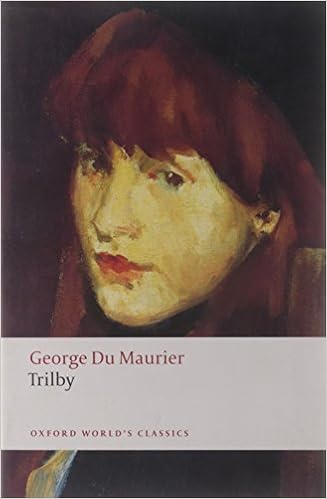
Trilby is a good novel with many flaws. One is that the author, George Du Maurier, the grandfather of the romantic novelist Dame Daphne Du Maurier (1907-1981), placed French sayings, parts of conversations, and even significant sentences and paragraphs in French, several times on every single page of his tale, making it impossible for non-French speakers to get the entire gist of what is happening. Another fault is that the characters in the tale are either entirely good and even noble and extremely likeable, while the villain, Svengali, is very bad, despicably bad, so bad that his name is used today for a monster of a man who tries to dominate and control women. But the worse flaw in the novel is its anti-Semitic portrayal of the Jew Svengali, who many scholars are convinced inspired Bram Stoker when he wrote his book Dracula. Both Svengali and Dracula can dominate and manipulate women, force them to do what they want the women to do against their will, and to do so in a manner that enhances the controller’s goal while harming the women who do what is demanded in a trance-like fugue. Du Maurier was also an illustrator for the periodical Punch and other magazines. He added his drawings to his published novel Trilby, and the drawings of Svengali are similar to those used by the Nazis, in their demeaning and dehumanizing of Jews.
Du Maurier (1834-1896) was the author of three books. Trilby was his second and only successful novel. It was published in book form, after being serialized the prior year, a play based on the book was performed the same year, and films were made of the novel in later years. I saw both films and neither describes or even hints that Svengali is Jewish. In its day, Trilby was the second best-selling novel, second only to Bram Stoker’s Dracula. Trilby is set in the 1850s in the Latin Quarter of Paris, France.
The novel has in essence two interlocking plots. The first is the thwarted love between two innocents, pure-minded, trusting youths, Trilby age 17 or 18, a naked model for painters and sculptors, and Little Billie, a painter, about the same age. The two love each other but Trilby and Little Billie’s mother, but not Little Billie himself, feel she is unfit for Little Billie because she is from a lower class of society. Trilby loved to sing the one song she knew, but she was a terrible singer.
The second plot focuses on Svengali. He is a master musician and hypnotist. He gains control over the life and thoughts of Trilby through hypnotism and transforms her into the greatest diva of her time. She sang gloriously in hypnosis, but only while she was in a trance. Whenever Du Maurier mentions Svengali he disparages him, and usually reminds readers that he is a Jew. Svengali is between age 30 and 40. He is sinister looking, shabby, unbathed, dirty, with lusterless hair, yellow teeth, insolent black eyes, a beard that grew from under his eyelids, has a mean and harsh voice and his words sound ghastly. He constantly borrows money and never repays what he borrowed. When he has Trilby under his control and has enslaved her, he tells everyone that she is his wife and calls her La Svengali, but tells Trilby that he is married and has children, and cannot marry her; both statements are lies; he is not married. (Du Maurier does not explain why this information about his lie to Trilby is placed in the book. It is likely that it is hinting that he has had sex with her.)
No comments:
Post a Comment